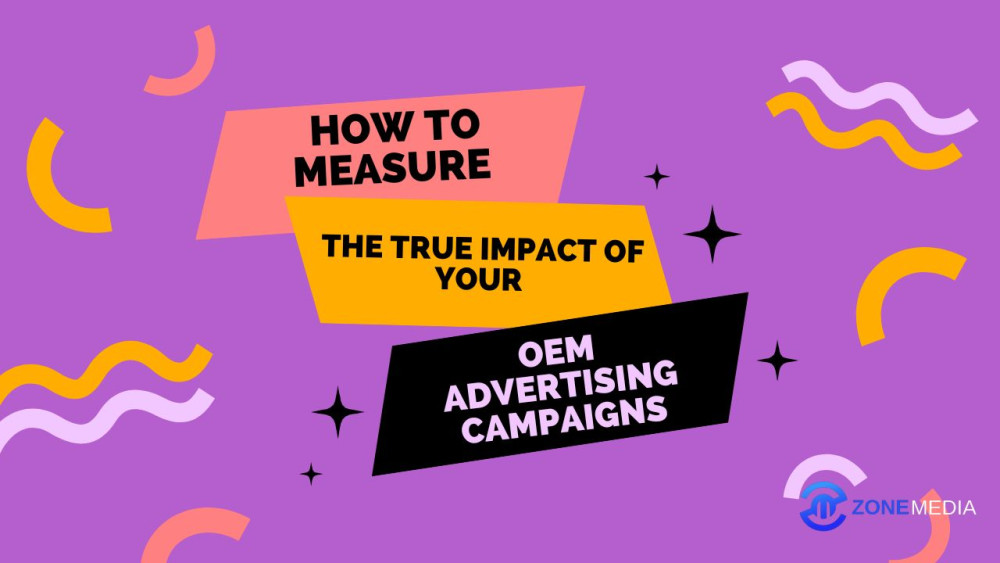Running an OEM advertising campaign is one thing—knowing if it’s actually working is another. Many brands spend vast amounts of money on marketing but fail to track the right metrics, leaving them in the dark about their campaign’s true impact. Measuring success isn’t just about looking at revenue; it’s about analyzing key performance indicators (KPIs) that reveal what’s working, what’s not, and how to optimize future efforts.
Let’s dive into the essential ways to measure the success of your OEM advertising campaigns and ensure your brand is getting the best return on investment (ROI).
1. Define Clear Goals and Objectives
Before measuring success, you need to establish what success looks like for your OEM campaign. Are you aiming for brand awareness? Lead generation? Increased conversions? Each goal requires a different set of metrics.
For example:
If your goal is brand awareness, focus on impressions, reach, and social engagement.
If its lead generation, track click-through rates (CTR), form submissions, and inquiries.
For conversions, monitor sales, cost per acquisition (CPA), and ROI.
By defining your objectives upfront, you create a clear roadmap for measurement.
2. Track Website Traffic and Engagement
Your website is a key destination for potential customers, making website analytics a critical success metric. Google Analytics and similar tools can help you track:
Traffic sources (organic search, paid ads, social media, etc.)
Bounce rate (how quickly visitors leave your site)
Time on page (how long they engage with your content)
Conversion rate (percentage of visitors taking a desired action)
If you notice high traffic but low engagement, you may need to optimize your website’s user experience or landing pages.
3. Monitor Click-Through Rates (CTR) on Ads
CTR is a key indicator of how well your ads resonate with your audience. A low CTR suggests your messaging or targeting needs improvement, while a high CTR means your ad is compelling and relevant.
To boost CTR:
Use engaging visuals and clear headlines
A/B test different ad creatives and copy
Ensure your ad aligns with your audience’s needs and interests
4. Measure Lead Generation and Conversion Rates
Generating interest is great, but converting leads into customers is the ultimate goal. Metrics to track include:
Form submissions (How many people filled out a contact form?)
Demo requests (Are potential buyers showing interest in your product?)
Sales-qualified leads (SQLs) (Are leads turning into actual opportunities?)
A low conversion rate might indicate that your landing pages or follow-up strategy need improvement.
5. Evaluate Cost-Per-Lead (CPL) and Return on Ad Spend (ROAS)
Every marketing dollar should be spent wisely. If your cost-per-lead (CPL) is too high or your return on ad spend (ROAS) is too low, you may need to adjust your campaign.
For example, if you’re spending $100 per lead but only converting 2% of those leads into customers, you need to find ways to lower your CPL or improve your lead nurturing strategy.
6. Assess Brand Awareness and Market Sentiment
Beyond direct conversions, brand awareness is a crucial measure of long-term success. Tools like social listening platforms and brand surveys can help you understand:
How often your brand is mentioned online
The sentiment behind customer conversations (positive vs. negative feedback)
Audience engagement on social media platforms
An increase in positive sentiment and engagement indicates strong brand recognition.
7. Analyze Performance Across Different Channels
Not all advertising channels perform equally. Measuring success requires evaluating which platforms drive the most value. Compare results from:
Programmatic ads vs. social media ads
Paid search vs. organic search
Video ads vs. display ads
By understanding which channels generate the best ROI, you can allocate your budget more effectively.
8. A/B Testing for Continuous Improvement
A successful OEM advertising campaign is never static—it requires constant optimization. A/B testing different ad creatives, messaging, landing pages, and targeting strategies allows you to refine what works best.
For example, testing two versions of an ad with different headlines can reveal which one drives more engagement. Small tweaks over time can lead to major improvements in performance.
Final Thoughts
Measuring the success of your OEM advertising campaigns isn’t just about looking at revenue—it’s about understanding the entire customer journey. By defining clear goals, tracking the right KPIs, and continuously optimizing your approach, you can ensure your campaigns drive real business results.
In today’s fast-paced digital world, data-driven decision-making is the key to staying ahead of the competition. So, is your OEM advertising campaign truly performing at its best? The numbers will tell the story.


